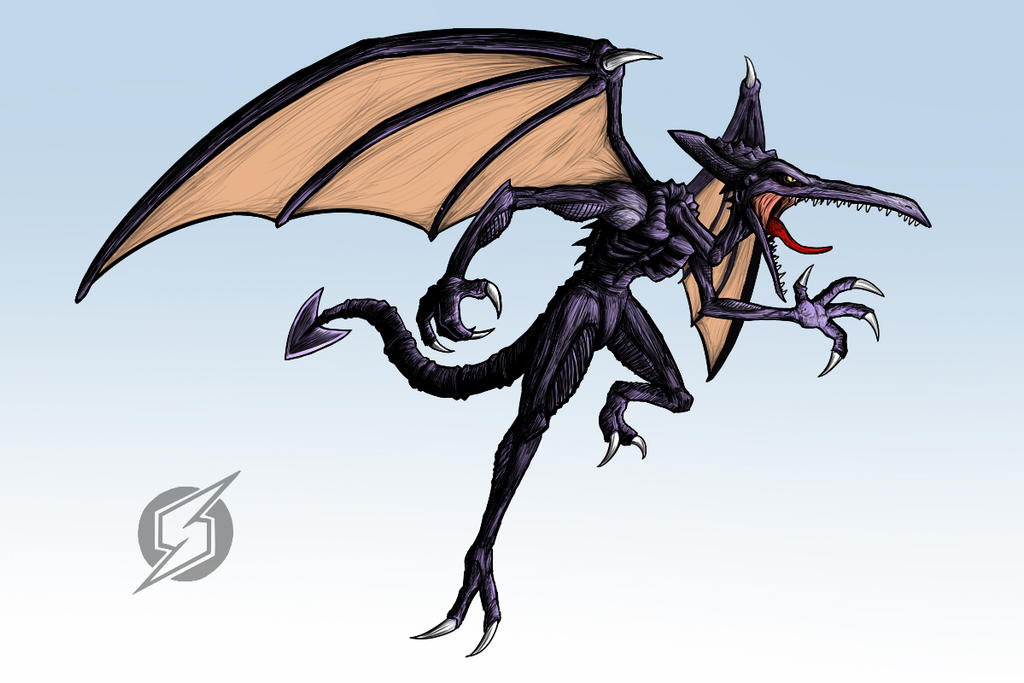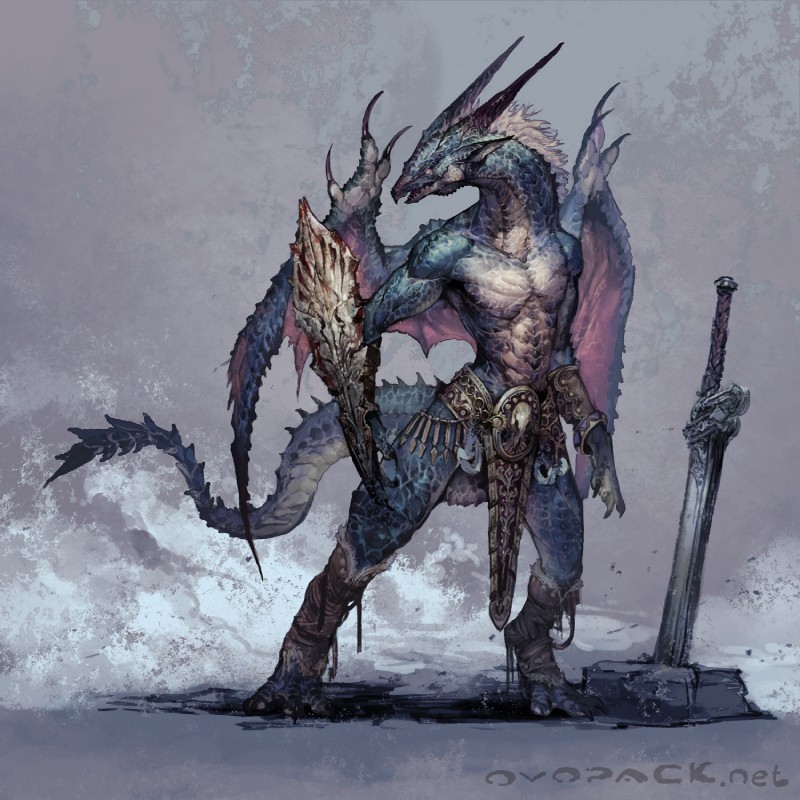Home Planet: Lanuria
Brief Summary of their Home Planet: Lanuria is a terrestrial world, slightly smaller then the Earth. Like Earth it has a nitrogen/oxygen atmosphere, but unlike Earth about 85% of the surface is covered in ocean, with wet environments on rough terrain like rainforests and marshes covering most of the land. Scientific evidence suggests that the planet once had greater land coverage and was in fact home to another species of similar intelligence to the Lanun which went extinct when the oceans grew to cover most of the planet for unknown reasons. Despite the lack of space, the amphibious Lanun have developed the technology to build sprawling urban centers on both land and sea, many of which serve as cultural and cosmopolitan trade hubs throughout the galaxy.
Lanuria possesses a thriving ecosystem, with most of the deeply diverse wildlife being amphibious or entirely aquatic. Among the more famous animals inhabiting Lanuria are
Sovacs, amphibious pack creatures described as something of a cross between a wolf and a shark, and Yeronids, a strange amorphous creature that exist both in the wild and as domesticated house pets. Objectively the most famous animal on Lanuria, however, is the
Losynek Drake, a draconic sea creature well-regarded for its grace, beauty, and intelligence. The Drake is held with such high regard by the Lanun that it has come to serve as a symbol not just for the planet but for the Lanun people as well. Using advanced eco-friendly technology, the Lanun have been able to build a civilization on their world that coincides peacefully with the myriad of wildlife that inhabits their world.
Empires This Race Belongs To: Most Lanun fall under the banner of the Lanurian Collective.
Member of the Galactic Federation?: Yes!
Number of Colonies: 16
General Appearance: Hailing from an aquatic world, the slightly diminutive and incredibly lithe Lanun share similar biological and physical features with aqautic creatures across the galaxy. They are warm-blooded amphibians who lay clutches of eggs, often up to a dozen, rather then having live births. Typically standing around five and a half feet tall, the Lanun have smooth, sleek skin that comes in cool, aquatic colors, with retractable flaps under their arms and on the sides of their necks and shoulders that come in more vibrant shades. They have slim but wiry musculature, and their four fingered hands are webbed and end in claws, while their digitigrade legs end in three-toed cloven hooves.
A capacious set of lungs among other features allow them to hold their breath underwater for nearly an hour at a time, and their four eyes, normally colored in the same vibrant shades as their arm flaps, can see incredibly well both below and above the waves. The Lanun also have pointed horns on their head, and while they are omnivores most Lanun prefer high-energy diets of meats and starches. They are also built for wet environments, and need special treatments in order to survive for long periods of time in arid or dry regions. Males and females are sometimes difficult to distinguish from one another, though males usually have more pronounced horns then the females and a slightly more top-heavy build.
Average Life Span: They have a similar life span to humans, though they reach adulthood earlier around the age of 14.
Galactic Rarity: The Lanun are quite common in the Galaxy, especially in wet or terrestrial worlds.
Primary Governmental Structure: The Lanurian Collective is what can best be described as undergoing the transition from an imperial monarchy to a constitutional monarchy. Due to efforts both inside and outside of Lanurian society, a powerful head of state is being phased away in favor of elected councils and sub-councils who can better manage planetary affairs then a singular ruler. For the most part the Councils are the de facto heads of state for the Collective, though the royal family does tend to dictate the direction in which the Collective is going, so to say.
Brief Description of Culture: The Lanun are great believers in the power of change, harmony, and innovation. Always looking to the future, they tend to view the world around them in a state of flux, and that rather then fight the chaos it is best to take things as they come and to keep an open mind. It's not uncommon for Lanun to have wildly different views on how society and morality functions, and while the Lanun generally shun anything they believe would lead to oppression and stagnation, the only constant thing about Lanun culture is that it's not constant at all.
To ebb and flow is to be Lanun, one popular saying goes,
and there is no greater crime then to fight the tide.
Special Traits/Racial Abilities:-Highly dexterous, natural swimmers and climbers.
-Very good endurance, able to survive without oxygen for an hour.
-Highly energy efficient, can run and perform physical activities for much longer then most species, including humans.
-Excellent eyesight both above and below water.
-Vulnerable in dry environments without special treatment.
Race Age: Roughly 250,000 years old.
Brief History of the Race: One of the younger races of the Galactic Federation outside of the humans, the Lanun had only just begun exploring planets when they made first contact with the Federation, leading to a veritable explosion of technology that allowed them to quickly ascend to the galactic stage. Thanks to a high population growth and their obsession with change and innovation, the Lanun quickly established themselves as one of the major races in the galaxy, if not the most stable one.
Major Technological Innovations/Inventions: While it is not a uniquely Lanurian innovation, the Lanun are considered pioneers in the creation of highly efficient, eco-friendly technology, with their innovative architecture, inventions, and city designs being used by races and empires all across the Federation to create strong, productive colonies and settlements. They are also highly regarded for their work in modern cybernetic augmentation, and are credited with the invention of the Ladovir Neural Interface, which has made both advanced and generic cybernetic augmentation much safer and efficient.
Expanded Cultural Overview: In keeping with their philosophy of constant change, the Lanun do not enforce or insist upon a unified faith for their people. While there are a sizable minority of Lanun who chose to worship nature Deities from Lanuria, traditional religion as a whole has generally given way to a philosophical belief known as the Flowing Tide. It is a pseudo-humanist belief that is centered around the values of individual agency, rationality, and the willingness to accept change and flux as positive things in life. The Flowing Tide has some mild popularity among other species besides the Lanun as well, thanks to its accepting and egalitarian beliefs.
Despite their love of progression, the Lanun do have a plethora of traditions and celebrations centered around nature and the passing of time. Perhaps the most famous is the Lanurian Wave Festival, a week long celebration of the beginning of the traditional Lanurian calendar year. Dressed the streets, the buildings, and themselves in vibrant oranges and blues, Lanurians will congregate in their great cities and celebrate the coming of the new year with extravagant parades, music, dancing, and feasting. The spectacle is a sight to behold, and Lanun and non-Lanun alike flock to Lanuria every year just to experience the biggest and most extravagant Life Festival right in the Lanurian capital.
As a contrast to the pageantry of the Wave Festival, celebrations for the hatching and coming of age of Lanurian young are considered private affairs, restricted to close family and friends (which, given the high birth rate of the Lanun, is still an impressive size). The youth of the Lanun are often encouraged at a young age to explore the world and chart their own course, with the knowledge that they have a home to come back to and a family that will support them no matter what choices they make. Burials at sea are common for the Lanun, and funerals are seen not as somber, sad affairs but as celebrations of the life and accomplishments of the deceased.
The Lanun find that they get along well with other species thanks to the accommodating nature of their way of life. Shrewd and clever, the Lanun have a reputation as being the scientific 'heart' of the Federation, and their presence in diplomatic circles is notable as well. Their eagerness to pursue new technologies has led to some strife with more traditionalist views in the Federation as Lanun scientists struggle against what they feel are unfair restrictions, such as the heavy regulation of AI technology.
Lanun naming conventions are somewhat unusual. They are usually given three names, with the first being a family name, the second being the given name. A Lanun's third name is chosen by themselves upon reaching adulthood, and typically is chosen by their owners to reflect their interests, beliefs, or professions. It's not uncommon for a Lanun's third name to change constantly over their lifetime, and the practice has given a lot of grief to non-Lanun bureaucrats and officials who have to deal with that practice.
Expanded History: Much of the true history of the Lanun is descended from oral accounts and scant written records. Archaeological evidence, however, suggest that at some point in the past Lanuria was a great deal dyer then it once was, and that there was an intelligent humanoid species predating the Lanun that lived on the planet. Due to an ecological disaster, however, the sea levels rose to the position they are today, and the pre-Lanun species went extinct. Oral records and mythology tells that the Lanun were slaves to this precursor species, commonly called the Baniku, and that they came to replace them as the dominant species when the sea flooded and made the planet more habitable to them, though this account is obviously difficult to prove.
The Lanun spent much of their pre-industrial history as nomadic tribes and small kingdoms, living along the coasts, frequently clashing with one another over what little territory there was. Technology progressed at a slow but steady rate, and Lanun technology was at about the level of pre-medieval Europe when there was suddenly an unusually massive surge in technological advancement. Myth and legend attributes this to the work of brilliant kings and leaders as well as divine intervention, while historians believe that the sudden advance of technological growth might have come from an alien device that accidentally crashed on the planet. Whatever the cause, the technological growth allowed the Lanun to create industry and farmland in amphibious and eco-friendly structures without the massive amount of effort needed to make the land workable.
With the new technology came cultural and social advancement as well, and as what were once tribes began to group together in larger confederations, nation-states, and empires, the Lanun began sending out ships to explore the mysterious depths of space. They had already begun to extensively colonize their home system when an exploration pod launched by the Ranos Empire made first contact with the Galactic Federation. Emboldened by the discovery that they were not alone in the galaxy and eager to see the benefits of becoming a part of the Federation, the Empress of Ranos began to make a grand push for unification of the Lanun. Thanks to her impressive negotiation skills (and a bit of help from the Federation), the Lanun managed to unite without a bloody civil war, and the three great powers signed the Collective Accords, uniting the three dominant powers under the banner of a new Lanurian Collective.
Other: (Nothing yet but I'm definitely going to be putting more stuff here when it comes to me :P )











